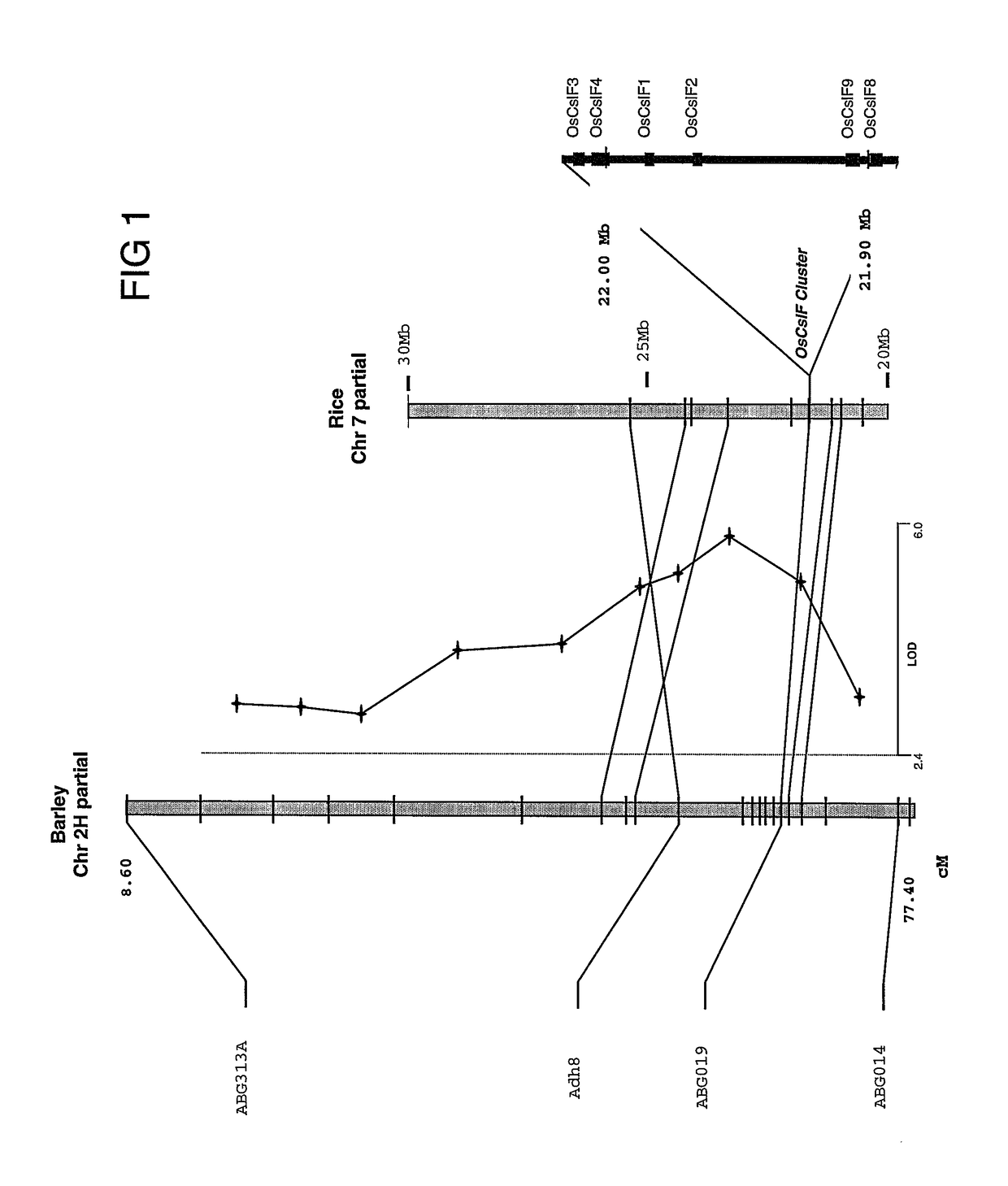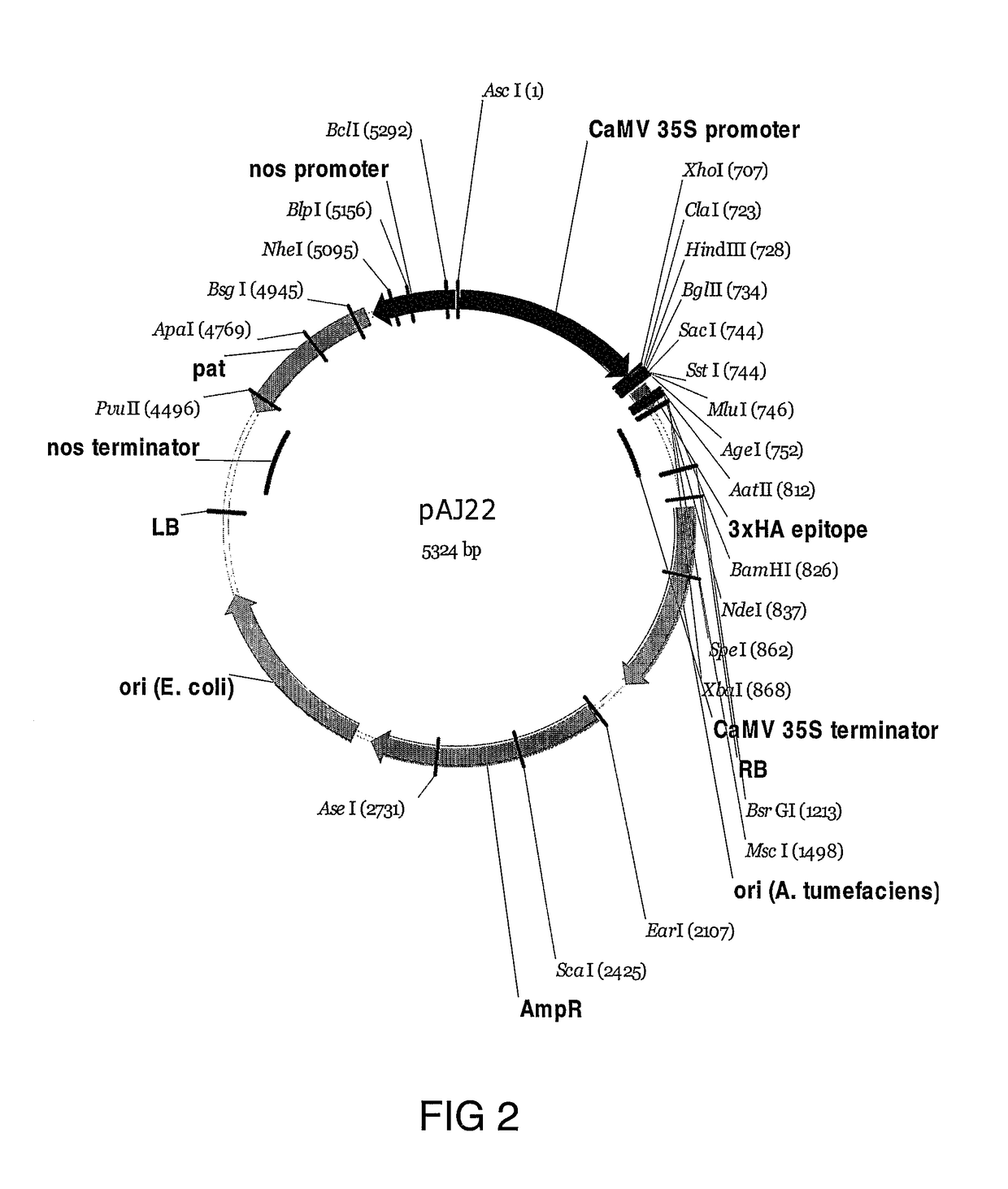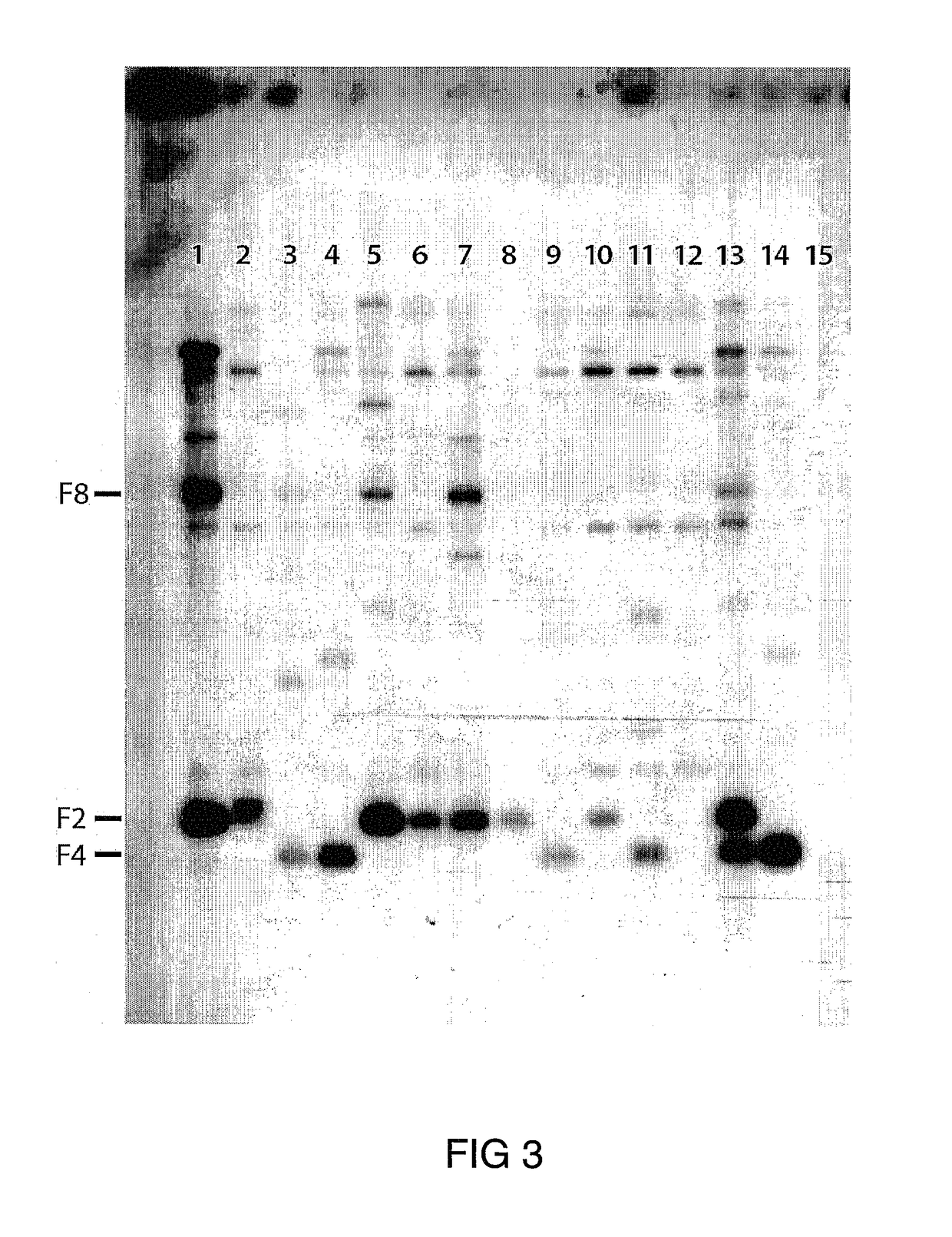Polysaccharide synthases
a polysaccharide and synthesizer technology, applied in the field of polysaccharide syntheses, can solve the problems of major gaps in our knowledge of genes and enzymes, affecting the efficiency of -d-glucan synthesizers,
- Summary
- Abstract
- Description
- Claims
- Application Information
AI Technical Summary
Benefits of technology
Problems solved by technology
Method used
Image
Examples
example 1
Identification of Candidate Genes Through Natural Variation of (1,3;1,4)-β-D-Glucan Content in Barley Grain
[0277]Comparative mapping studies have revealed that there is a high level of conservation of gene order along chromosomes of species of the Poaceae, although macro-colinearity at this level does not always predict gene presence or order at the micro level. Nevertheless, co-linearity at the megabase level is essential for the use of model species for positional cloning of genes, for development of molecular markers and for identifying candidate genes that affect a trait of interest in one species through reference to the syntenous region of a model species. Therefore, this approach was adopted to identify candidate genes for (1,3;1,4)-β-D-glucan synthases in cereals.
[0278]Quantitative trait loci (QTL) mapping and comparative genomics has been used to identify genes involved in cell wall biosynthesis in maize (Zea mays). Because of the central role played by (1,3;1,4)-β-D-glucan...
example 2
Transformation of Arabidopsis thaliana with Rice CslF Genes
[0285]The possible role of the rice OsCslF genes in (1,3;1,4)-β-D-glucan synthesis was tested by gain-of-function in transgenic Arabidopsis plants. Arabidopsis walls contain no (1,3;1,4)-β-D-glucan and the Arabidopsis genome does not contain any known CslF genes. Therefore, the deposition of (1,3;1,4)-β-D-glucan into walls of transgenic Arabidopsis plants carrying rice OsCslF genes would indicate that the introduced gene(s) encoded (1,3;1,4)-β-D-glucan synthases. This approach assumed and depended upon the availability in Arabidopsis of any precursors, intermediates, cofactors or ancillary enzymes needed for (1,3;1,4)-β-D-glucan synthesis.
[0286]Accordingly, the rice CslF1, 2, 3, 4, 8 genes were successfully amplified from cDNA by PCR and cloned into the pAJ22 binary vector, behind the 35S promoter, as shown in FIG. 2.
[0287]The plasmid vectors were subsequently inserted into Agrobacterium tumefaciens, which was used to transf...
example 3
Immunological Characterization of Transgenic Arabidopsis Lines
[0301]Transgenic Arabidopsis lines in which OsCslF transcript levels were highest were chosen for further analysis, in particular with respect to the deposition of (1,3;1,4)-β-D-glucan in cell walls. In the first instance, immunocytochemical methods involving monoclonal antibodies specific for (1,3;1,4)-β-D-glucans and electron microscopy were used to screen transgenic lines for the presence of the polysaccharide in the Arabidopsis lines. The antibody used does not bind with cellooligosaccharides or the (1→3)-β-D-glucan, callose. Inhibition studies showed that it binds relatively weakly to (1,3;1,4)-β-D-oligoglucosides.
[0302]Pieces of 14- and 28-day old leaves were sectioned for monoclonal antibody probing, and the antibody was routinely checked by pre-incubating tissue sections with commercially available barley (1,3;1,4)-β-D-glucan. Pre-incubation with the polysaccharide blocks the binding of gold-labelled secondary ant...
PUM
 Login to View More
Login to View More Abstract
Description
Claims
Application Information
 Login to View More
Login to View More - Generate Ideas
- Intellectual Property
- Life Sciences
- Materials
- Tech Scout
- Unparalleled Data Quality
- Higher Quality Content
- 60% Fewer Hallucinations
Browse by: Latest US Patents, China's latest patents, Technical Efficacy Thesaurus, Application Domain, Technology Topic, Popular Technical Reports.
© 2025 PatSnap. All rights reserved.Legal|Privacy policy|Modern Slavery Act Transparency Statement|Sitemap|About US| Contact US: help@patsnap.com



